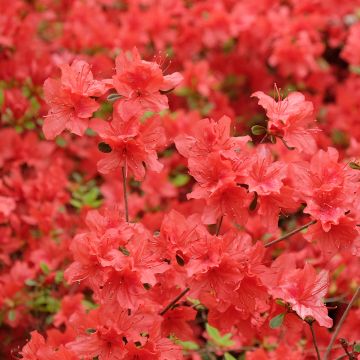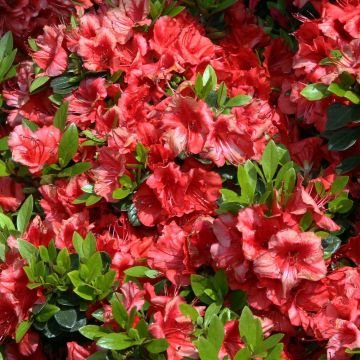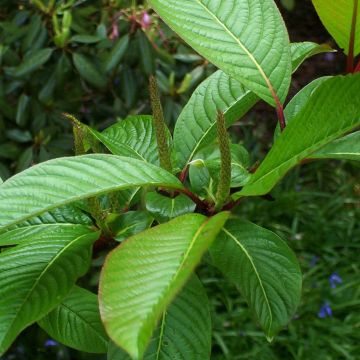Shipping country and language
Your country of residence may be:
Your country of residence is:
For a better user experience on our website, you can select:
Your shipping country:
-
Andorra
-
Austria
-
Belgium
-
Bulgaria
-
Canada
-
Chile
-
Croatia
-
Cyprus
-
Czechia
-
Denmark
-
Estonia
-
Finland
-
France
-
Germany
-
Greece
-
Hungary
-
Iceland
-
Ireland
-
Italy
-
Latvia
-
Lithuania
-
Luxembourg
-
Malta
-
Monaco
-
Netherlands
-
Poland
-
Portugal
-
Romania
-
Slovakia
-
Slovenia
-
Spain
-
Sweden
-
Switzerland
-
United Kingdom
We only deliver seed and bulb products to your country. If you add other products to your basket, they cannot be shipped.
Language:
-
French
-
German
-
Spanish
-
English
-
Italian
My Account
Hello
My wish lists
Log in / Register
Existing customer?
New customer?
Create an account to track your orders, access our customer service and, if you wish, make the most of our upcoming offers.


Tetracentron sinense
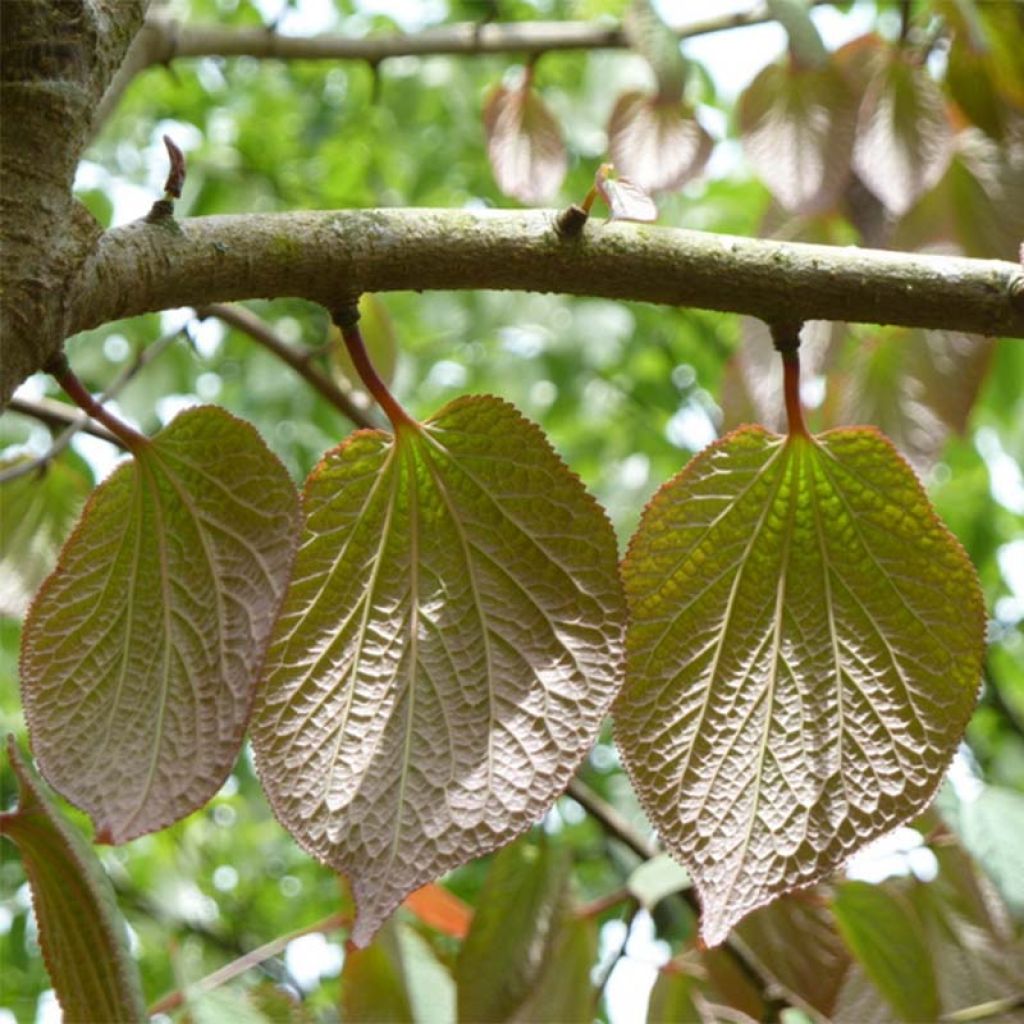

Tetracentron sinense


Tetracentron sinense


Tetracentron sinense
Tetracentron sinense
Tetracentron sinense
Spur Leaf
Beautiful bush, I am very pleased as I have been looking for it for a long time!
Jean-Yves, 11/10/2018
Order in the next for dispatch today!
Dispatch by letter from €3.90.
Delivery charge from €5.90 Oversize package delivery charge from €6.90.
More information
This item is not available in your country.
Schedule delivery date,
and select date in basket
This plant carries a 24 months recovery warranty
More information
We guarantee the quality of our plants for a full growing cycle, and will replace at our expense any plant that fails to recover under normal climatic and planting conditions.
From €5.90 for pickup delivery and €6.90 for home delivery
Express home delivery from €8.90.
Does this plant fit my garden?
Set up your Plantfit profile →
Description
The Tetracentron sinense is a tree of Chinese origin, rare in cultivation, which deserves to be better known and planted more in our gardens for its ornamental qualities. Of medium stature, and graceful, it adorns itself with young red heart-shaped foliage, becoming tender green, which will again take on beautiful tones in autumn before falling. Its spring and summer flowering in long pendulous aments reminiscent of hazelnuts. Its decorative fruiting is arranged in thin garlands along the branches. Although hardy, but fearing late frosts that can compromise its flowering, it is grown in bright or semi-shaded exposure, together with other plants that, like it, appreciate cool atmospheres and neutral to acidic soils, poor in limestone.
The Tetracentron sinense is the only representative of the genus Tetracentron, belonging to the family Tetracentraceae. Introduced to Europe in 1901 by E.Wilson, it is native to central and southwest China, northern Vietnam, northern Myanmar, Nepal, Bhutan, and regions in northeast India. It is found on the banks of watercourses, on the edge of forests, on damp slopes, and in steep valleys. Its species name, Tetracentron, comes from the Greek tetra meaning four and kentron meaning prickle, alluding to the 4 dart-shaped appendages that adorn the fruit. In its native lands, where it is on the brink of disappearing, this tree will reach a height of 30 m (98ft).
The habit of Tetracentron sinensis is generally upright and rounded. Its growth is moderately fast, reaching maturity at about 12 m (39ft) in height and 6 m (20ft) in width in our climates. The trunk and old branches are covered with a gray-brown bark that flakes off in large patches. The branches are dark brown, smooth, marked with numerous lighter lenticels. The branches consist of two types of stems: the first are long, terminal, and bear leaves arranged alternately. On these, thin and short lateral stems, which grow very slowly, will each bear a leaf and an inflorescence. The deciduous foliage consists of ovate to cordate leaves, measuring 10 to 15 centimeters (4 to 6 inches) long and 7 to 9 cm wide, with toothed edges, palmate veins, somewhat resembling those of the Judas tree. They are tender green on top, paler underneath, measuring 7 to 12 cm (3 to 5in) long and 5 cm (2in) wide. In autumn, they turn yellow, orange, or red. The flowering appears in spring but only opens in August. It takes the form of long pendulous aments measuring 9 to 15 cm (4 to 6in), composed of numerous tiny flowers initially green, then yellowish when they open. After pollination by insects, the flowers give way to small fruits that are capsules divided into 4 chambers with prickle-like extensions.
A rare species of damp soils and rather humid climates, Tetracentron sinensis generally tolerates any ordinary soil that remains moist and without excessive limestone. Well adapted to our temperate climates, its hardiness allows it to be adopted in many regions. This charming and elegant small tree can be planted alone or with other acid-loving shrubs (Stewartia, Rhododendron, azaleas, Hydrangea, Hamamelis) or even in more ordinary soil with Hydrangea, Parrotia, and deciduous euonymus to animate the garden in autumn. You can also plant autumn bulbs, such as colchicums or cyclamen, around its base.
Report an error about the product description
Tetracentron sinense in pictures
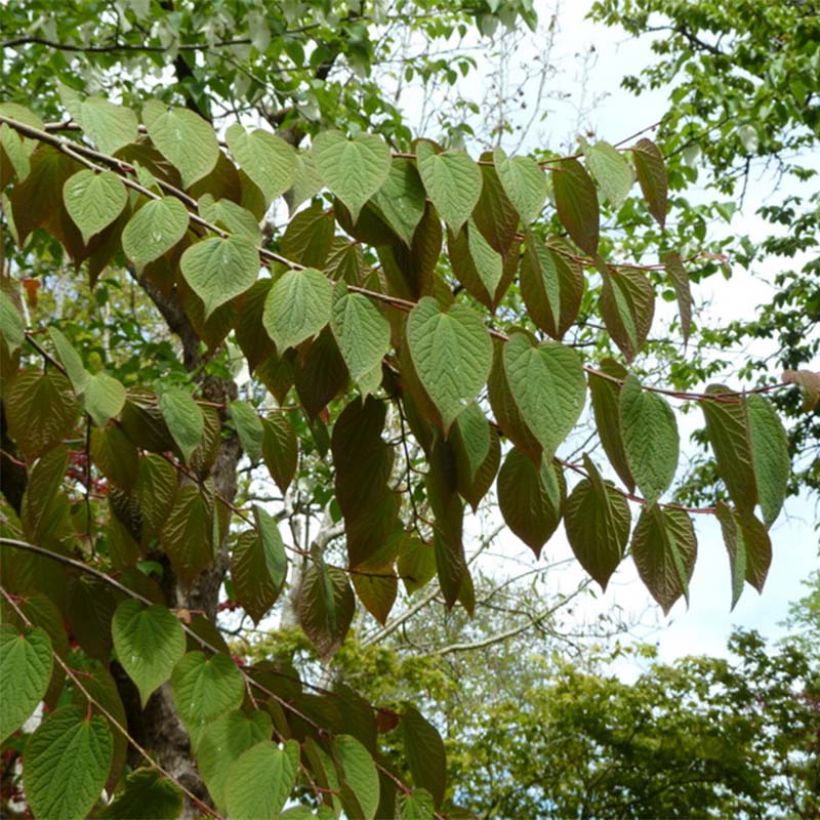

Plant habit
Flowering
Foliage
Botanical data
Tetracentron
sinense
Tetracentraceae
Spur Leaf
China
Other Shrubs A to Z
Planting and care
Tetracentron sinensis is planted in spring or autumn. It is a bush that ideally prefers slightly acidic to neutral soil, although it tolerates the presence of a reasonable amount of limestone. It appreciates soils that remain fresh, humus-rich, and rather fertile. A deep and properly loosened ordinary soil will also be suitable. Choose a preferably semi-shaded or sunny exposure that is not scorching. It should be placed sheltered from cold and drying winds, as it fears late frosts that can compromise flowering. The bush should not be planted too deeply, the top of the root ball should be covered with 3 cm (1in). In winter, cover it with a mulch 5 to 7 cm (2 to 3in) thick composed of leaf compost and crushed bark. During dry periods, water to maintain soil moisture, as this bush fears prolonged drought but can tolerate heat.
Planting period
Intended location
Care
-
, onOrder confirmed
Reply from on Promesse de fleurs
Trees and large shrubs
Haven't found what you were looking for?
Hardiness is the lowest winter temperature a plant can endure without suffering serious damage or even dying. However, hardiness is affected by location (a sheltered area, such as a patio), protection (winter cover) and soil type (hardiness is improved by well-drained soil).

Photo Sharing Terms & Conditions
In order to encourage gardeners to interact and share their experiences, Promesse de fleurs offers various media enabling content to be uploaded onto its Site - in particular via the ‘Photo sharing’ module.
The User agrees to refrain from:
- Posting any content that is illegal, prejudicial, insulting, racist, inciteful to hatred, revisionist, contrary to public decency, that infringes on privacy or on the privacy rights of third parties, in particular the publicity rights of persons and goods, intellectual property rights, or the right to privacy.
- Submitting content on behalf of a third party;
- Impersonate the identity of a third party and/or publish any personal information about a third party;
In general, the User undertakes to refrain from any unethical behaviour.
All Content (in particular text, comments, files, images, photos, videos, creative works, etc.), which may be subject to property or intellectual property rights, image or other private rights, shall remain the property of the User, subject to the limited rights granted by the terms of the licence granted by Promesse de fleurs as stated below. Users are at liberty to publish or not to publish such Content on the Site, notably via the ‘Photo Sharing’ facility, and accept that this Content shall be made public and freely accessible, notably on the Internet.
Users further acknowledge, undertake to have ,and guarantee that they hold all necessary rights and permissions to publish such material on the Site, in particular with regard to the legislation in force pertaining to any privacy, property, intellectual property, image, or contractual rights, or rights of any other nature. By publishing such Content on the Site, Users acknowledge accepting full liability as publishers of the Content within the meaning of the law, and grant Promesse de fleurs, free of charge, an inclusive, worldwide licence for the said Content for the entire duration of its publication, including all reproduction, representation, up/downloading, displaying, performing, transmission, and storage rights.
Users also grant permission for their name to be linked to the Content and accept that this link may not always be made available.
By engaging in posting material, Users consent to their Content becoming automatically accessible on the Internet, in particular on other sites and/or blogs and/or web pages of the Promesse de fleurs site, including in particular social pages and the Promesse de fleurs catalogue.
Users may secure the removal of entrusted content free of charge by issuing a simple request via our contact form.
The flowering period indicated on our website applies to countries and regions located in USDA zone 8 (France, the United Kingdom, Ireland, the Netherlands, etc.)
It will vary according to where you live:
- In zones 9 to 10 (Italy, Spain, Greece, etc.), flowering will occur about 2 to 4 weeks earlier.
- In zones 6 to 7 (Germany, Poland, Slovenia, and lower mountainous regions), flowering will be delayed by 2 to 3 weeks.
- In zone 5 (Central Europe, Scandinavia), blooming will be delayed by 3 to 5 weeks.
In temperate climates, pruning of spring-flowering shrubs (forsythia, spireas, etc.) should be done just after flowering.
Pruning of summer-flowering shrubs (Indian Lilac, Perovskia, etc.) can be done in winter or spring.
In cold regions as well as with frost-sensitive plants, avoid pruning too early when severe frosts may still occur.
The planting period indicated on our website applies to countries and regions located in USDA zone 8 (France, United Kingdom, Ireland, Netherlands).
It will vary according to where you live:
- In Mediterranean zones (Marseille, Madrid, Milan, etc.), autumn and winter are the best planting periods.
- In continental zones (Strasbourg, Munich, Vienna, etc.), delay planting by 2 to 3 weeks in spring and bring it forward by 2 to 4 weeks in autumn.
- In mountainous regions (the Alps, Pyrenees, Carpathians, etc.), it is best to plant in late spring (May-June) or late summer (August-September).
The harvesting period indicated on our website applies to countries and regions in USDA zone 8 (France, England, Ireland, the Netherlands).
In colder areas (Scandinavia, Poland, Austria...) fruit and vegetable harvests are likely to be delayed by 3-4 weeks.
In warmer areas (Italy, Spain, Greece, etc.), harvesting will probably take place earlier, depending on weather conditions.
The sowing periods indicated on our website apply to countries and regions within USDA Zone 8 (France, UK, Ireland, Netherlands).
In colder areas (Scandinavia, Poland, Austria...), delay any outdoor sowing by 3-4 weeks, or sow under glass.
In warmer climes (Italy, Spain, Greece, etc.), bring outdoor sowing forward by a few weeks.
